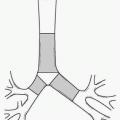Organization and Operation of the Interventional Radiology Clinic
Evelyn P. Wempe
Richard Foley
DéAnn O. McNamara
Critical to the success of a clinically based interventional radiology (IR) practice is the establishment of the ambulatory IR clinic. Due to the complex diagnostic and therapeutic procedures that the specialty offers, along with involved patient medical histories, the IR clinic setting offers the opportunity for providers to evaluate, manage, and provide follow-up care to patients.
Having an IR clinic promotes the provider-patient relationship, which is fundamental to the practice of medicine. Establishing trust and effective communication
between the patient and the health care provider improves clinical outcomes and patient compliance (1). Additionally, the clinic visit offers the opportunity to provide patient and family education regarding the procedure, identify patient needs, develop a plan of care, and coordinate any preprocedure workup. Establishing and operating a clinic requires hard work by the entire IR team, with the trade-off of enhancing both the patient experience and quality of care.
between the patient and the health care provider improves clinical outcomes and patient compliance (1). Additionally, the clinic visit offers the opportunity to provide patient and family education regarding the procedure, identify patient needs, develop a plan of care, and coordinate any preprocedure workup. Establishing and operating a clinic requires hard work by the entire IR team, with the trade-off of enhancing both the patient experience and quality of care.
Clinical Considerations
1. Scheduling
a. New patient visits. Patients being seen in the IR clinic for the first time should be scheduled for 1 hour. This allows sufficient time to obtain the necessary information as it relates to the patient and the clinical presentation for which consultation is sought. The initial visit includes a comprehensive examination, pertinent history and physical examination, and explanation of the intended procedure including risks, benefits, and potential complications. Oftentimes, patients arrive to the clinic having researched their condition and potential treatment options. They will be well informed and have pertinent questions that require multifaceted explanations. It is important to provide a relaxed environment where the exchange of information can occur between patient and provider.
b. Established patients. Follow-up visits for patients that are known to the practice are typically scheduled for 30 minutes. Routinely, these visits are postprocedure evaluations and problem-focused. These visits provide the continuity of care that reinforces the specialty’s responsibility and accountability in the longitudinal care of patients undergoing invasive procedures.
2. Clinical assessment
a. Comprehensive examination. Clinical assessment of the patient includes performing a comprehensive exam, which includes a thorough history and physical examination, a review of diagnostic imaging and blood work, and a review of pertinent medical records.
b. A comprehensive exam should include the following:
(1) Chief complaint
(2) History of present illness
(3) Past medical history
(4) Past surgical history
(5) Social history
(6) Allergies
(7) Medications
(8) Review of systems
(9) Physical examination
(10) Review of imaging studies
(11) Assessment/impression
(12) Plan of care
c. Assessment may identify other clinical problems not related to the chief complaint (2). The IR provider brings a unique perspective that can lend valuable insight into the cause of the problem and treatment options.
d. Certain clinical conditions and management issues are not within the realm of the IR specialty and should be referred to the appropriate specialty. The IR provider needs to recognize his or her scope of practice and refer when appropriate to provide optimum patient care.
3. Plan of care
By the conclusion of the patient’s visit, a plan of care should be created and documented by the IR provider. If the plan of care involves undergoing a procedure, the IR provider will need to identify the procedure to be performed and the rationale. The plan of care also identifies any preprocedure workup required.
4. Coordination of care
a. Preprocedure planning. The clinic visit offers the opportunity for patients to have any preprocedure workup coordinated prior to being discharged from the clinic. Patients may require updated blood work, additional imaging, or an additional clinical visit with the anesthesia team, primary care provider (PCP), or a specialty provider in order to prepare optimally for the procedure.
(1) Procedure scheduling. Communication between the IR clinic staff and the facility in which the procedure is to be performed should take place during the patient’s clinic discharge process. A date and time should be provided to the patient. Insurance considerations need to be addressed at the time of scheduling to ensure a realistic date is provided to avoid delay of treatment.
(2) Blood work/imaging workup




Stay updated, free articles. Join our Telegram channel

Full access? Get Clinical Tree





